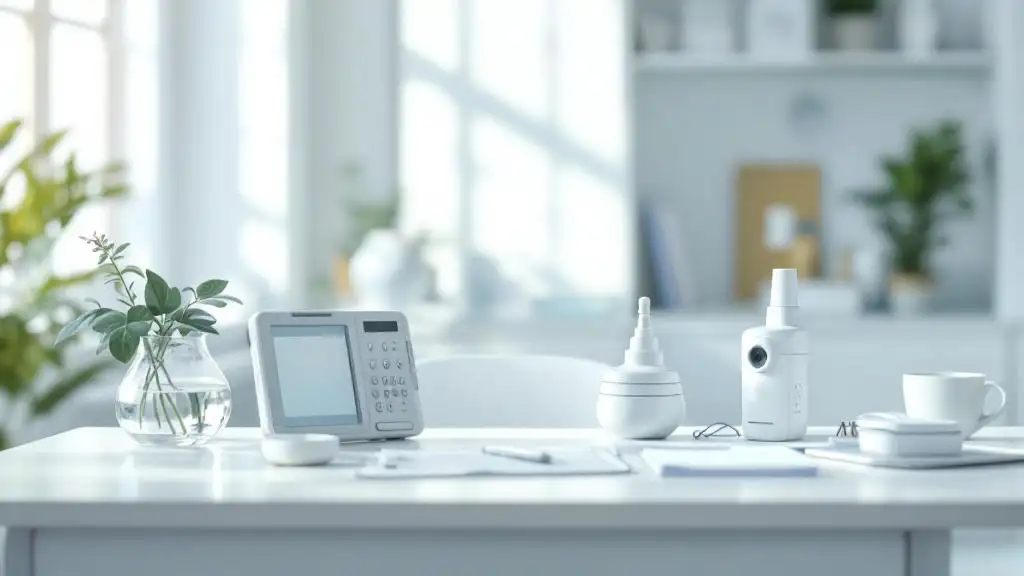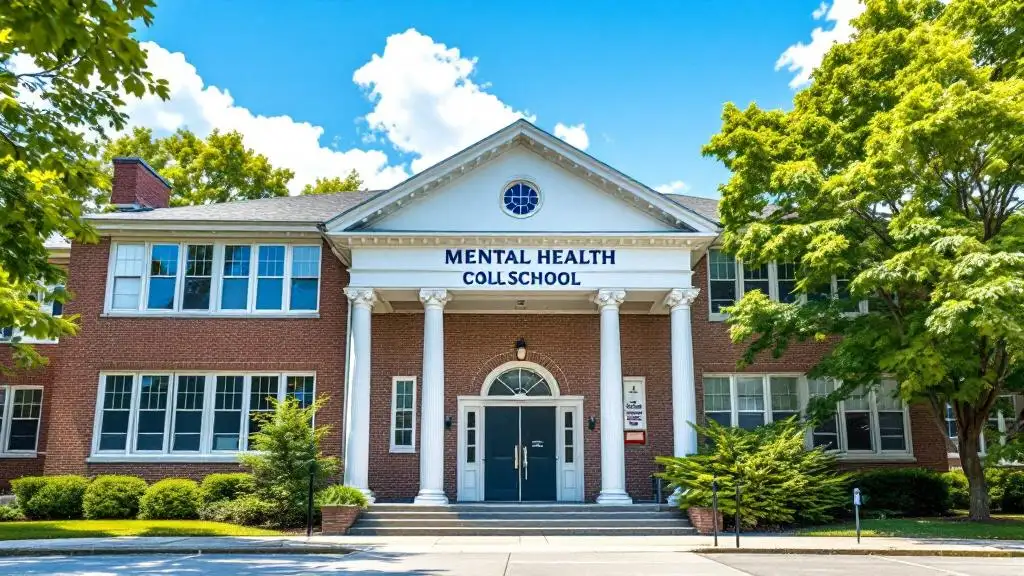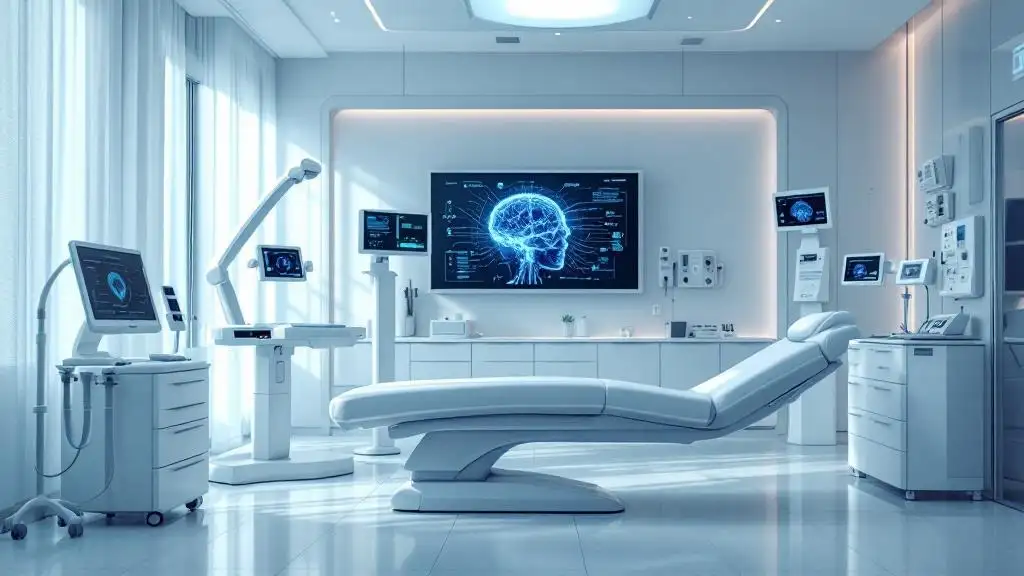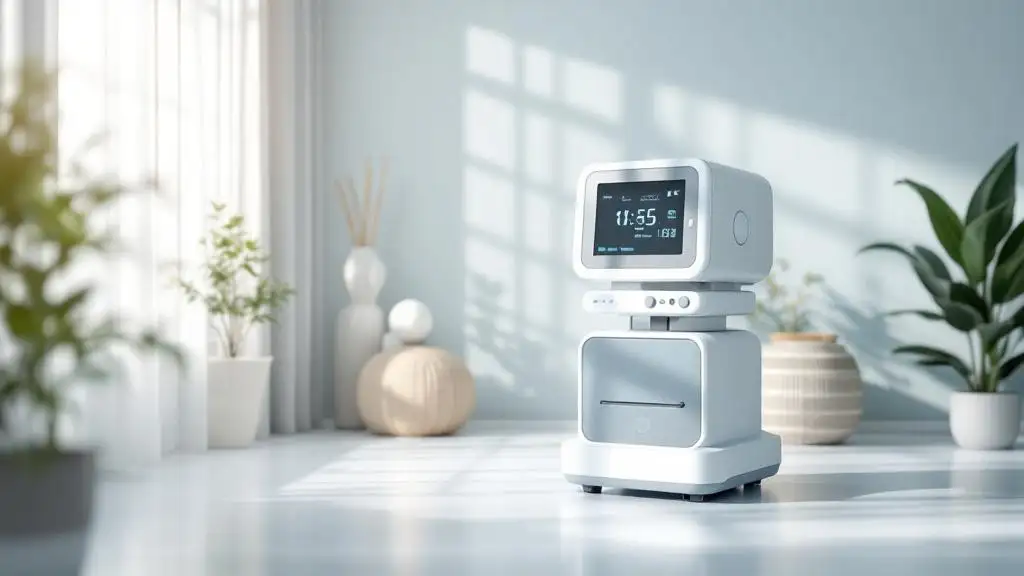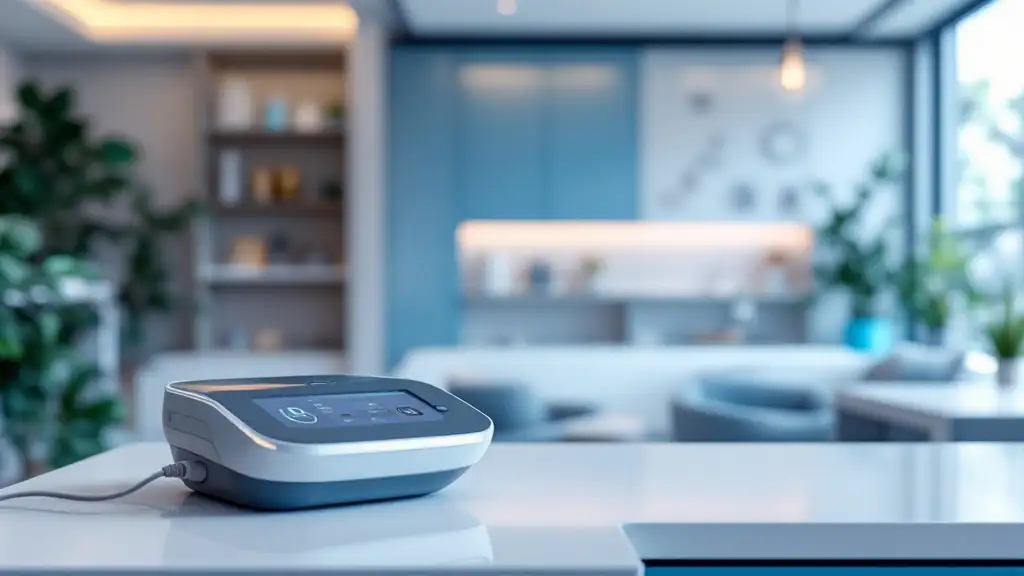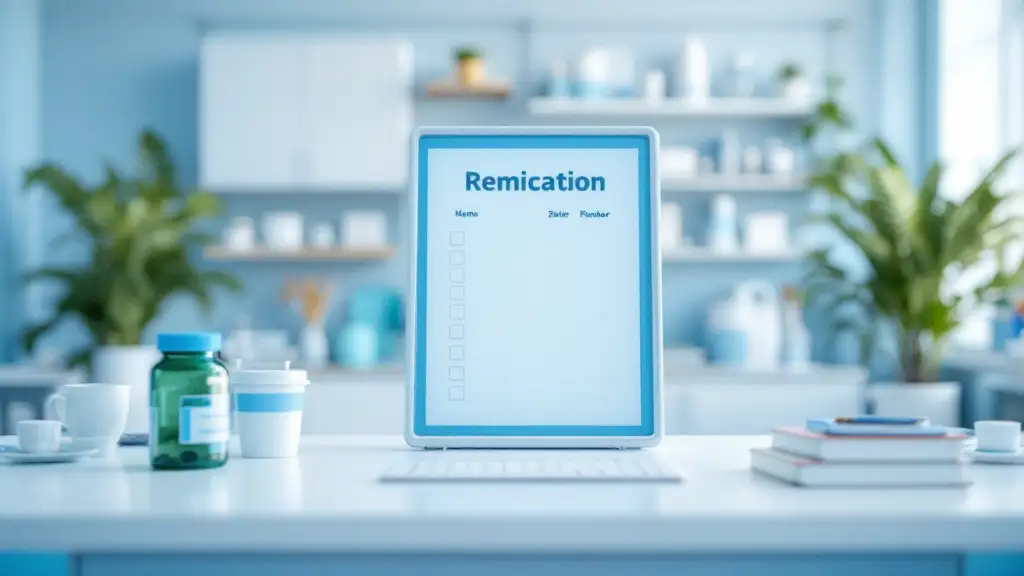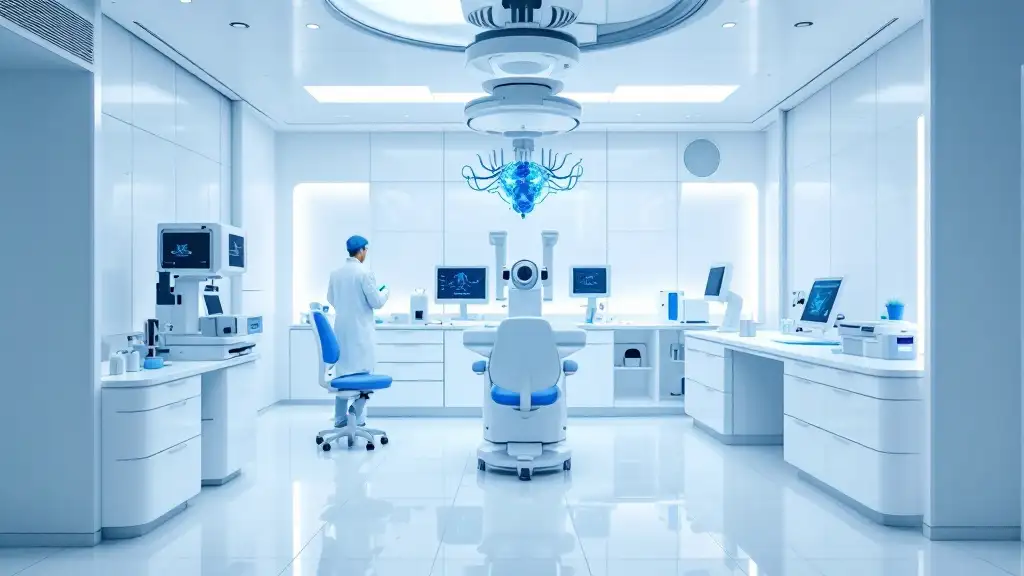Understanding the Importance of At-Home Cognitive Screening
As the global aging population rises, early detection of cognitive decline has become a priority for healthcare systems worldwide. Innovations in at-home screening methods now offer accessible, efficient, and scientifically validated tools for identifying early signs of dementia and related impairments. This article explores the landscape of self-administered tests and technological tools that enable individuals to monitor their cognitive health from the comfort of their homes, supported by cutting-edge research and emerging biomarkers.
Overview of At-Home Cognitive Screening Methods
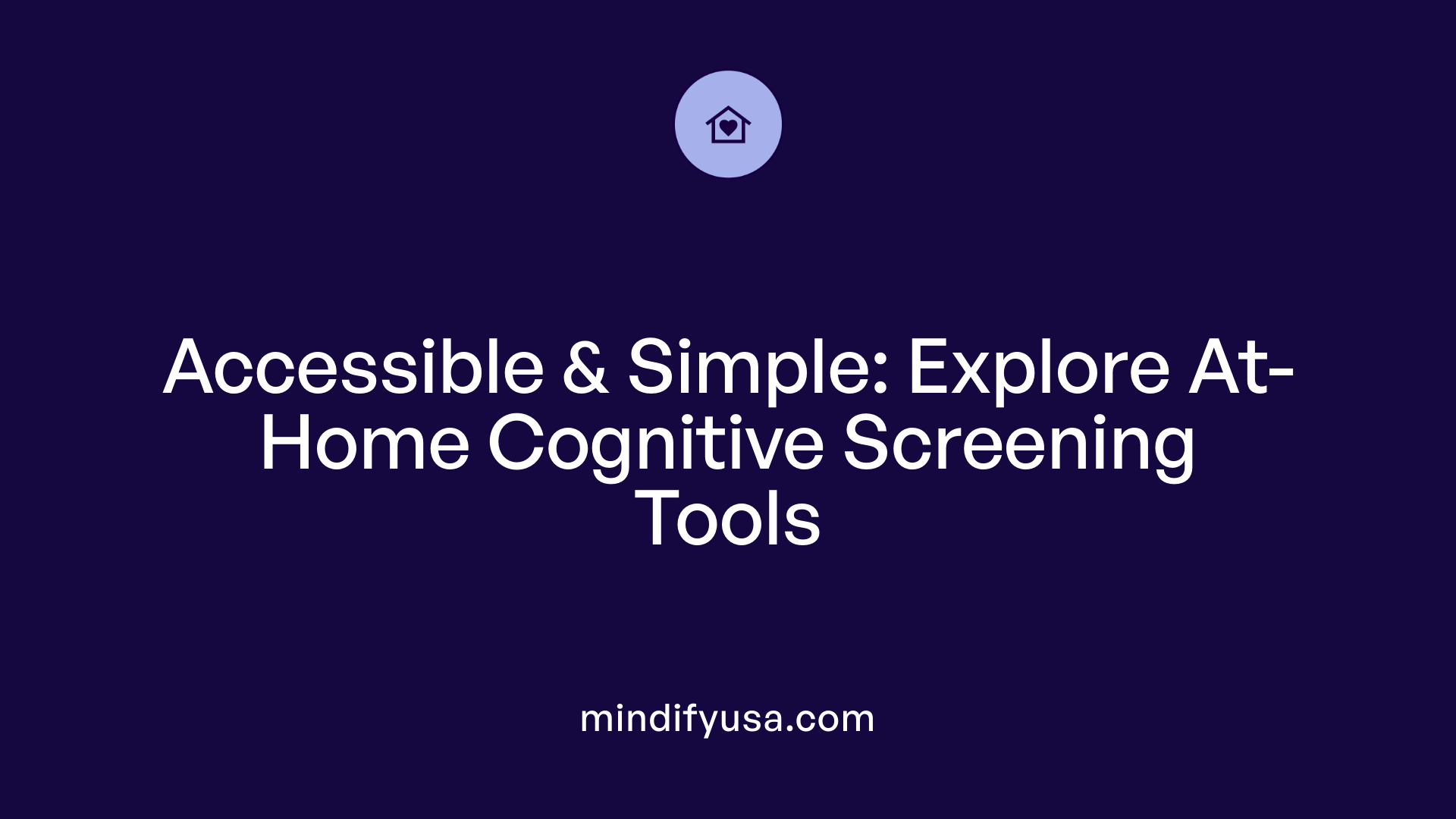 Various at-home approaches are available for early detection of cognitive decline and dementia, aiming to make screening accessible and straightforward.
Various at-home approaches are available for early detection of cognitive decline and dementia, aiming to make screening accessible and straightforward.
One common method involves self-administered tests such as the SAGE (Self-Administered Gerocognitive Examination). Developed by Dr. Douglas Scharre at Ohio State University, SAGE assesses multiple cognitive areas including memory, language, reasoning, and visuospatial skills. It can be taken at home using paper and pencil or digital versions on tablets, making it convenient for individuals to evaluate their cognitive health regularly.
Another popular tool is the Mini-Cog©, which focuses on quick assessment of memory and executive function. Recommended by organizations like the Alzheimer's Association, it involves simple tasks such as recalling words and drawing a clock, allowing for rapid screening in non-clinical settings.
Digital assessment platforms and mobile applications are increasingly used for cognitive screening. These tools, such as Cognivue and Cognigram, provide computerized tests that monitor cognitive performance over time. They are designed for easy use, often requiring only a few minutes to complete, and can track changes to help identify early signs of impairment.
An innovative approach is the Five-minute Cognitive Test (FCT), which measures key cognitive functions including memory, language, orientation, visuospatial ability, and executive function. Studies have shown high accuracy in early detection, with the benefit of being brief and user-friendly.
Overall, these at-home methods are built for convenience and early intervention. They serve as initial screening tools to flag potential issues, encouraging timely consultation with healthcare professionals for further evaluation and management.
The Role of Self-Administered Tests and Technology in Early Detection
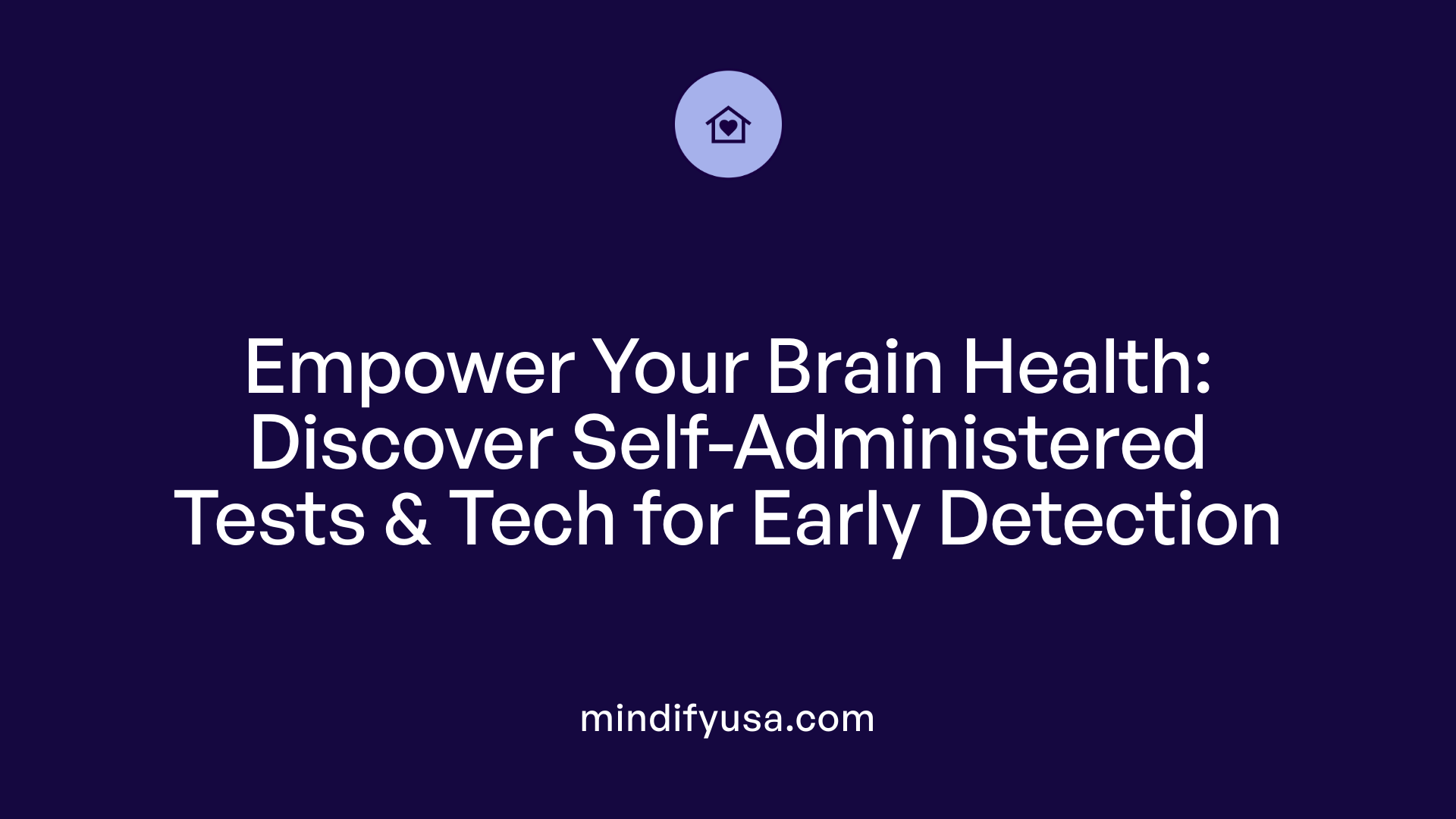 Self-administered cognitive assessments and technological innovations have revolutionized how we monitor brain health, making early detection of impairments more accessible and efficient.
Self-administered cognitive assessments and technological innovations have revolutionized how we monitor brain health, making early detection of impairments more accessible and efficient.
Regular testing outside traditional clinical environments allows individuals to track their cognitive function over time. Devices and apps like the SAGE test, BioCog, and fast EEG brainwave technology can be used conveniently at home or in non-clinical settings. These tools provide a practical way to identify subtle signs of decline, such as lapses in memory or slowed reaction times, before symptoms become severe.
The integration of digital assessments enhances screening capabilities by offering precise measurement of multiple brain functions. For example, the SAGE test evaluates orientation, language, reasoning, visuospatial ability, and memory. Meanwhile, new methods such as the Fastball EEG detect early brainwave changes linked to Alzheimer’s, sometimes years before clinical diagnosis.
These innovations also facilitate better correlation with biological markers like amyloid beta levels, blood tests, and brain scans. This means that digital cognitive testing can be paired with biomarker analysis to improve accuracy in early detection.
By making testing more accessible, automated, and cost-effective, these tools help reduce healthcare disparities. They enable timely interventions, which are crucial as recent drug developments target early disease stages. Overall, self-administered assessments paired with technology offer a promising path toward proactive brain health management, empowering individuals and supporting clinicians in early diagnosis.
Scientific Evidence Backing at-Home Cognitive Assessments
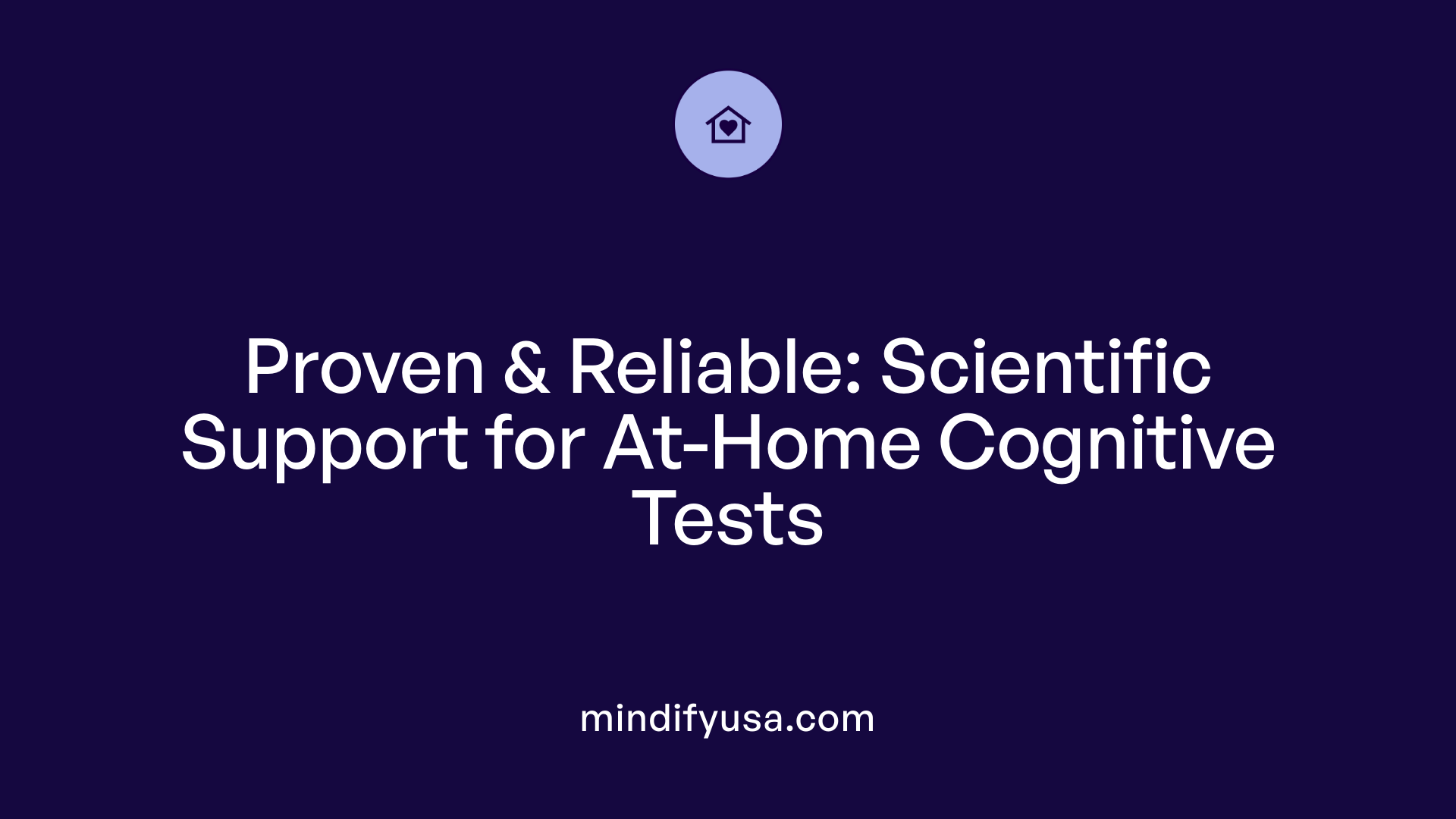 Various scientific studies underscore the validity and reliability of at-home cognitive assessment methods, highlighting their potential role in early detection of neurodegenerative conditions. Digital tools such as smartphone-based tests and online questionnaires have demonstrated impressive sensitivity levels, often comparable to traditional clinical tests.
Various scientific studies underscore the validity and reliability of at-home cognitive assessment methods, highlighting their potential role in early detection of neurodegenerative conditions. Digital tools such as smartphone-based tests and online questionnaires have demonstrated impressive sensitivity levels, often comparable to traditional clinical tests.
For instance, research involving smartphone assessments like the 'Prices' test has shown an area under the curve (AUC) of up to 0.77 for identifying Alzheimer’s disease pathology. This performance is similar to established in-clinic tools such as the Montreal Cognitive Assessment (MoCA). These digital assessments can distinguish individuals with early cognitive impairment with notable accuracy, making them practical for remote screening.
Other innovative approaches include simple, self-administered odor discrimination tests developed by researchers at Mass General Brigham. These odor-based assessments correlate strongly with early neurodegenerative changes and can be conducted at home, offering a non-invasive alternative for preliminary screening.
A comprehensive review of digital cognitive screening tools supports their use as effective early warning systems. They have shown moderate to high correlations with brain biomarkers associated with Alzheimer's disease, such as amyloid and tau proteins. Their feasibility in older populations and ease of repeated administration make them promising for continuous monitoring.
Moreover, recent technological advances include EEG-based tools like the Fastball EEG, capable of detecting memory impairments within three minutes through passive brain response recordings. These innovations could provide objective, scalable options for early cognitive decline detection.
In summary, scientific research affirms that validated at-home cognitive assessments—ranging from digital apps, odor tests, to brainwave recordings—are effective in identifying early signs of cognitive impairment. They serve as practical, non-invasive, and scalable screening methods that complement traditional clinical evaluations, enabling earlier intervention and better management of conditions like Alzheimer’s disease.
Specific Cognitive Assessment Tools and Their Uses
What are some specific cognitive assessment tools like SAGE, Mini-Cog, and brainwave-based tests, and how are they used?
Cognitive assessment tools such as the SAGE (Self-Administered Gerocognitive Exam) and the Mini-Cog play important roles in early detection of cognitive decline. SAGE is a brief, self-administered pen-and-paper test that takes about 10-15 minutes. It evaluates multiple brain functions, including orientation, language, memory, reasoning, visuospatial skills, and executive function. Healthcare providers interpret SAGE scores to identify potential signs of mild cognitive impairment (MCI) or early dementia.
The Mini-Cog is even quicker, usually completed within three minutes. It combines a three-word recall task with a clock drawing test, providing a simple but effective screening method. It is often used in routine check-ups or primary care settings to flag individuals who might need further assessment.
In recent advancements, brainwave-based tests, primarily EEG (electroencephalogram) assessments, are being explored as neurophysiological tools to detect early neurodegenerative changes. These tests record electrical activity in the brain while viewing images or during passive tasks, offering a non-invasive way to monitor brain health.
Brainwave assessments are particularly promising because they do not require active recall or verbal responses, making them accessible for diverse populations. When combined with traditional cognitive tests like SAGE or Mini-Cog, these methods enhance the accuracy of early diagnoses.
Overall, these tools serve both clinical and home settings. They assist in early detection, ongoing monitoring, and guiding timely interventions for conditions like Alzheimer’s disease.
Emerging Biomarkers and Scientific Advances
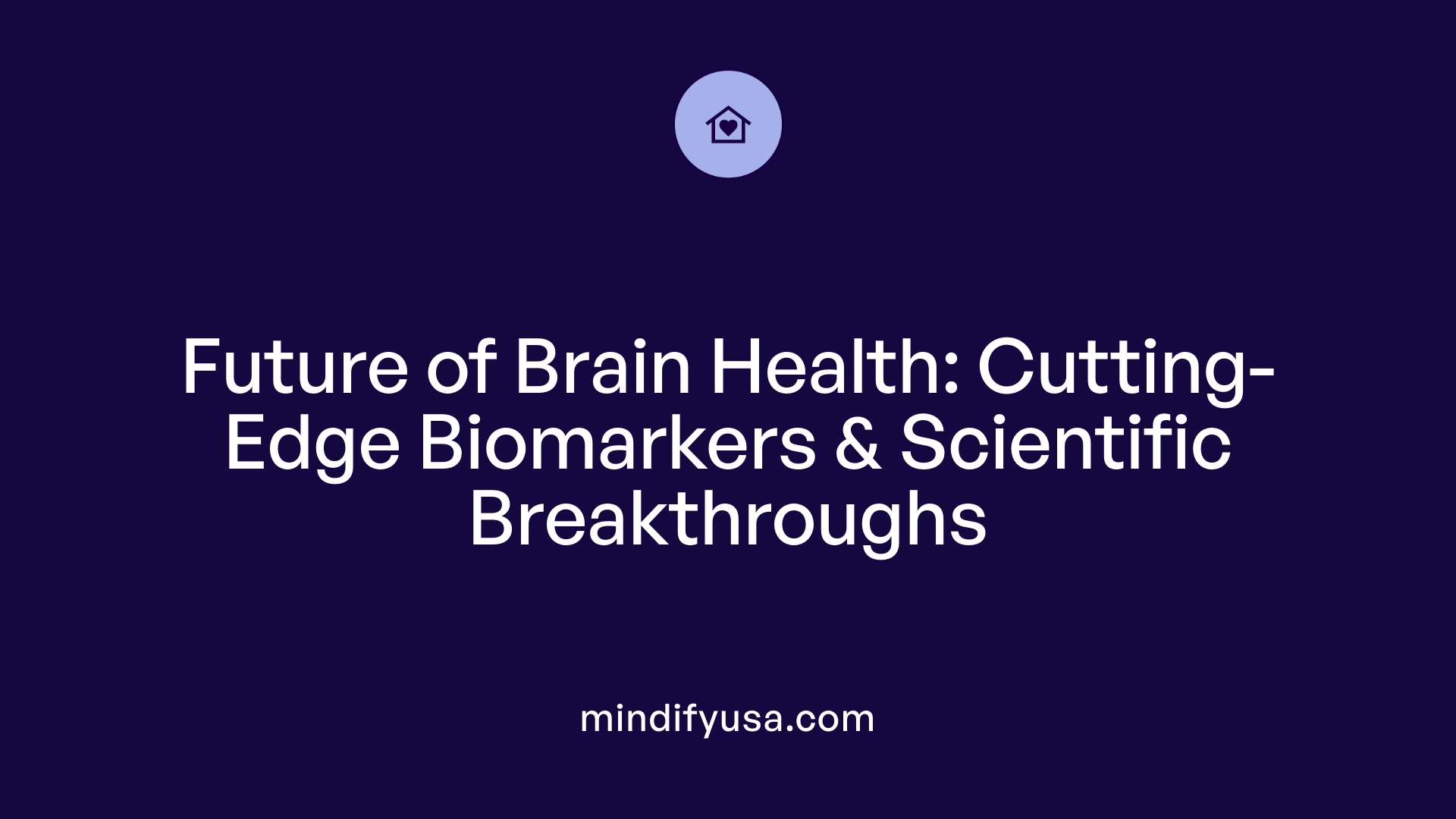 Recent scientific developments have significantly enhanced our ability to detect Alzheimer's disease and other dementias early in their progression. Researchers are now exploring a variety of innovative biomarkers and imaging technologies to identify subtle changes in brain health before symptoms become severe.
Recent scientific developments have significantly enhanced our ability to detect Alzheimer's disease and other dementias early in their progression. Researchers are now exploring a variety of innovative biomarkers and imaging technologies to identify subtle changes in brain health before symptoms become severe.
One of the most promising areas is blood-based biomarkers. These include measurements of plasma amyloid-β and tau proteins, which directly relate to the core pathology of Alzheimer's. Neurofilament light chains, which indicate neuronal damage, and immune markers like GFAP and TREM2, are also being studied as cost-effective, minimally invasive tests that can detect preclinical disease stages.
Neuroimaging techniques have advanced as well. Tau PET scans allow visualization of abnormal tau protein accumulation in brain regions such as the hippocampus and locus coeruleus. Structural MRI scans further help by tracking brain atrophy patterns that correlate with cognitive decline. These tools reveal early pathological changes that were previously undetectable.
Genetic and molecular markers add another layer of insight. Variants like the APOE4 gene mutation are known risk factors, while gene expression profiles and microRNAs provide additional information about an individual's likelihood of developing dementia. Such markers can help identify at-risk populations well before clinical symptoms arise.
Combining these biomarkers with machine learning algorithms enhances diagnostic accuracy. By analyzing large datasets, AI models can reliably differentiate between normal aging and early disease signs, improving early detection and enabling timely intervention.
Overall, these scientific advances hold great promise. They foster a move toward personalized medicine, where interventions can be tailored based on individual risk profiles. This progress makes early diagnosis more attainable, offering hope for improved outcomes through earlier treatment and preventative strategies.
| Biomarker Type | Technique | Diagnostic Utility | Additional Details |
|---|---|---|---|
| Blood-based biomarkers | Plasma amyloid-β, tau | Detect preclinical Alzheimer's | Cost-effective, minimally invasive |
| Neuroimaging | Tau PET, MRI | Visualize early pathology | Focus on hippocampus, locus coeruleus |
| Genetic and molecular markers | APOE4, gene expression, microRNAs | Assess genetic risk and molecular changes | Help identify at-risk individuals |
| Combining with AI | Machine learning models | Improve diagnostic precision | Analyzes large, complex datasets |
The Impact of At-Home Screening on Early Signs Detection and Intervention
 Routine monitoring of cognitive functions plays a vital role in recognizing early signs of memory loss and cognitive decline. Self-administered tools such as the SAGE (Self-Administered Gerocognitive Exam) allow individuals to regularly evaluate key brain domains like memory, language, reasoning, and visuospatial abilities from the comfort of their homes. These brief assessments, which take only a few minutes, are designed to spot subtle changes that often precede noticeable symptoms of conditions like mild cognitive impairment (MCI) and early dementia.
Routine monitoring of cognitive functions plays a vital role in recognizing early signs of memory loss and cognitive decline. Self-administered tools such as the SAGE (Self-Administered Gerocognitive Exam) allow individuals to regularly evaluate key brain domains like memory, language, reasoning, and visuospatial abilities from the comfort of their homes. These brief assessments, which take only a few minutes, are designed to spot subtle changes that often precede noticeable symptoms of conditions like mild cognitive impairment (MCI) and early dementia.
Studies validate that the SAGE test, along with newer digital options like BioCog and innovative brainwave tests, demonstrate high sensitivity in predicting cognitive decline. These tools serve as early warning systems, providing valuable insights into an individual’s brain health before traditional clinical diagnoses are possible.
Regular use of at-home cognitive screening encourages proactive awareness, helping people identify incremental changes over time. This early detection fosters timely medical consultations and personalized intervention plans, which can slow disease progression and improve quality of life. In essence, at-home screening strategies are transforming how early signs of cognitive impairment are identified and managed, highlighting their importance in preventive brain health care.
By facilitating earlier intervention, these assessments not only enhance patient outcomes but also reduce long-term healthcare costs by delaying the need for more intensive treatments and institutional care.
For more information, search queries such as "early detection of cognitive decline," "home screening benefits," and "early intervention strategies" can provide additional resources and insights into these evolving approaches.
Advancing Cognitive Health Through At-Home Technologies
The convergence of scientific research, technological innovation, and practical tools has transformed the landscape of cognitive health monitoring. At-home screening methods, from self-administered tests like SAGE to brainwave EEG assessments, offer promising avenues for early detection of cognitive decline. These tools empower individuals to take proactive steps, facilitate timely medical interventions, and improve patient outcomes. As biomarkers and diagnostic technologies continue to evolve, integrating them into accessible at-home platforms will play a critical role in addressing the global challenge of dementia and Alzheimer’s disease. The future of cognitive health lies in scalable, user-friendly solutions that promote early awareness, reduce healthcare disparities, and ultimately support healthier aging worldwide.
References
- These Free At-Home Dementia Tests Can Detect Early Signs ...
- SAGE - Memory Disorders - Wexner Medical Center
- New In-Home Cognitive Testing Aims to Detect Dementia
- Development of a home-based cognitive test for ...
- Computerized Testing To Detect Cognitive Decline
- Primary care detection of Alzheimer's disease using a self ...
- All About the SAGE Test for Alzheimer's and Dementia ...
- Alzheimer's: At-Home Brainwave Test Offers Early Warning
- Screening at home for memory loss: Should you try it?
- Cognitive Screening and Assessment











